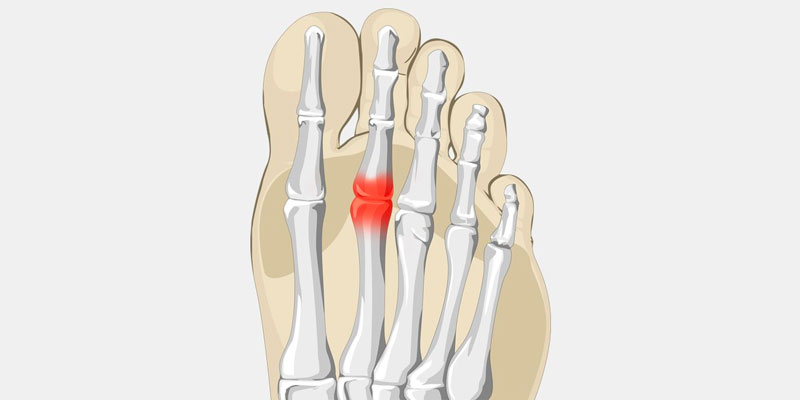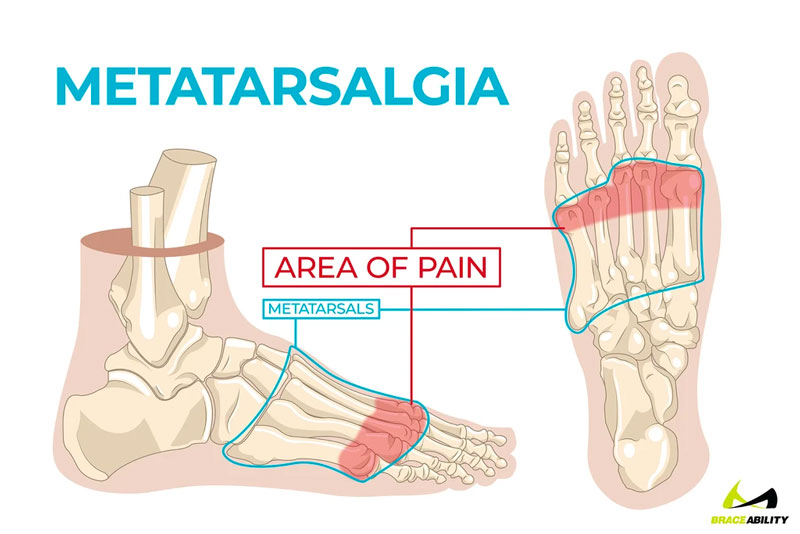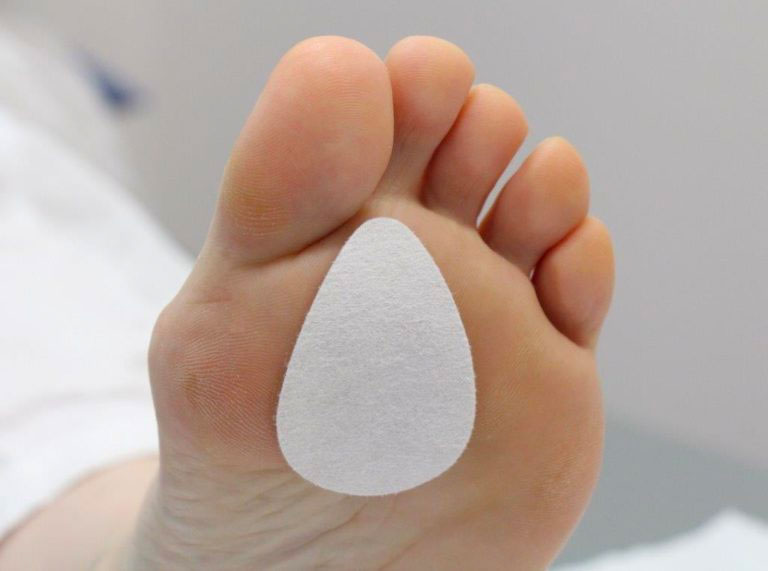
10 Facts about Forefoot pain (a.k.a. Metatarsalgia)
Those with Metatarsalgia experience pain and tenderness underneath the forefoot, which can extend into the toes(1).
Pain in this condition is typically described as a “deep bruise” or feeling like there’s a rock under the ball of the foot, particularly when putting weight on or pushing off the foot during walking.
Most commonly Metatarsalgia affects the head of 2nd metatarsal bone (i.e. next to the big toe)(2), as seen in the image below:

(3). For example: wearing restrictive high heels or participating in lots of high impact activities.

- There are 2 main categories of Metatarsalgia, including: primary and secondary{3,4).
- Primary Metatarsalgia refers to pain that develops due to abnormalities of an individual’s foot biomechanics or anatomy, for example: high arched feet or having clawed toes.
- Secondary Metatarsalgia arises as a by-product of systemic conditions, such as diabetes, rheumatoid arthritis, gout, neurological or vascular disease, etc.
- Primary Metatarsalgia refers to pain that develops due to abnormalities of an individual’s foot biomechanics or anatomy, for example: high arched feet or having clawed toes.
- Primary Metatarsalgia is much more common, with 84% of cases having a biomechanical cause(5).

- Many patients with Metatarsalgia can significantly reduce pain and disability without the need for surgery. Non-operative strategies that commonly yield good success include:
- Changing to more comfortable or supportive footwear.
- Exercises to help improve the mobility of the foot and lower limb, i.e. calf and sole of foot stretching.
- Specialised padding or custom-made orthopaedic insoles.
- Changing to more comfortable or supportive footwear.

- As this is an inflammatory condition, Metatarsalgia often responds well to anti-inflammatory medication. This includes oral medication, and later on, corticosteroid injections if required.
- If an individual finds that their pain is non-responsive to conservative treatment, review by an Orthopaedic Surgeon may be required.
References:
1. Gutteck, N., Schilde, S., & Delank, K. S. (2019). Pain on the Plantar Surface of the Foot. Deutsches Arzteblatt international, 116(6), 83–88. doi:10.3238/arztebl.2019.0083
2. Landry M. (2014). Brukner & Khan's Clinical Sports Medicine. Physiotherapy Canada, 66(1), 109–110. doi:10.3138/ptc.66.1.rev2
3. Metatarsalgia. (n.d.). Retrieved January 6, 2020, from https://www.physio-pedia.com/Metatarsalgia.
4. Espinosa N, Maceira E, Myerson MS. Current concept review: metatarsalgia. Foot Ankle Int. 2008 Aug;29(8):871-9. doi: 10.3113/FAI.2008.0000. Review. PubMed PMID: 18752791.
5. Bardelli, M & Turelli, L & Scoccianti, G. (2003). Definition and classification of metatarsalgia. Foot and Ankle Surgery. 9. 79-85. 10.1016/S1268-7731(02)00002-4.